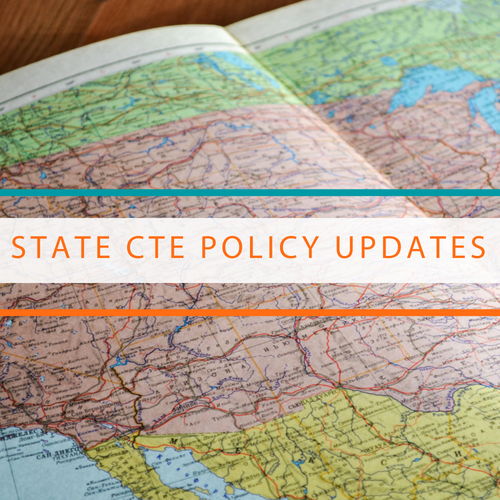 Since the beginning of the year, over 35 governors have delivered their State of the State addresses, sharing their visions for the future of their state and highlighting educational priorities. Some addresses proposed to create new Career Technical Education (CTE) initiatives or increase funding for work-based learning, while others emphasized the importance of preparing students for their careers. In all, 24 addresses implicated CTE in some capacity, especially in the areas of workforce development, work-based learning and funding.
Since the beginning of the year, over 35 governors have delivered their State of the State addresses, sharing their visions for the future of their state and highlighting educational priorities. Some addresses proposed to create new Career Technical Education (CTE) initiatives or increase funding for work-based learning, while others emphasized the importance of preparing students for their careers. In all, 24 addresses implicated CTE in some capacity, especially in the areas of workforce development, work-based learning and funding.
Workforce Development
Speeches most commonly addressed workforce development at all learner levels which, considering states’ strategies for economic recovery, comes as no surprise. At the secondary level, Missouri Governor Mike Parson set a goal of 12,000 high school students with the WorkKeys Certification, calling the program an “important stepping stone for students who are not immediately college bound but have the knowledge and skills to fill high-demand jobs.” Kentucky Governor Andy Beshear announced the creation of the Better Kentucky Promise Program, a postsecondary-focused initiative to help over 6,000 Kentucky residents complete associate degrees or secure industry-recognized certificates. At the adult level, Governor Greg Gianforte of Montana announced the establishment of the Montana Trades Education Credit, which subsidizes businesses through scholarships up to 50% of the cost of upskilling or reskilling employees, and highlighted the Missouri One Start program, which has trained over 100,000 adults through 400 employer training partnerships.
Work-Based Learning
Many governors highlighted the importance of work-based learning initiatives in providing secondary students with career-ready skills. Governor Kim Reynolds of Iowa applauded efforts to integrate work-based learning into the K-12 curriculum and called on legislators to make work-based learning an expectation in all Iowa schools. Governor Brad Little similarly highlighted the role of work-based learning in Idaho, committing to further connecting students and employers for on-the-job experiences and professional skill development. Alaska Governor Mike Dunleavy also called for an expansion in this area, directing the Alaska Department of Education to create an apprenticeship program allowing secondary students to receive credit while working for local employers.
Funding and New Initiatives
Announcements of new or proposed funding also featured prominently across many speeches. South Carolina Governor Henry McMaster proposed $97 million for high-demand job skills training and workforce scholarships and grants to improve access to skills-based certificates. Governor Bill Lee of Tennessee highlighted the Governor’s Investment in Vocational Education (GIVE) Act, which consisted of $25 million in grants for 28 projects focused on CTE program expansion, and proposed a $10 million expansion for ten new sites, prioritizing economically disadvantaged communities. North Dakota Governor Doug Borgum advocated for $45 million allocated to supporting the expansion and development of successful CTE centers through matched grants, while South Dakota Governor Kristi Noem announced the Build Dakota Scholarship, a five-year, $40 million investment to match students with high-demand career opportunities. Investment in access to and expansion of CTE programming and training remains a clear priority nationwide.
Outside of CTE related areas, governors also focused heavily on equity in education, including highlighting how COVID-19 has disproportionately exacerbated achievement gaps for communities of color and allocating additional funding for expansion of broadband to students still participating in virtual learning. Advance CTE will continue to monitor the State of the State Addresses as they happen for their relevance to CTE.
Additional resources can be found in our Learning that Works Resource Center.
Dan Hinderliter, Policy Associate
